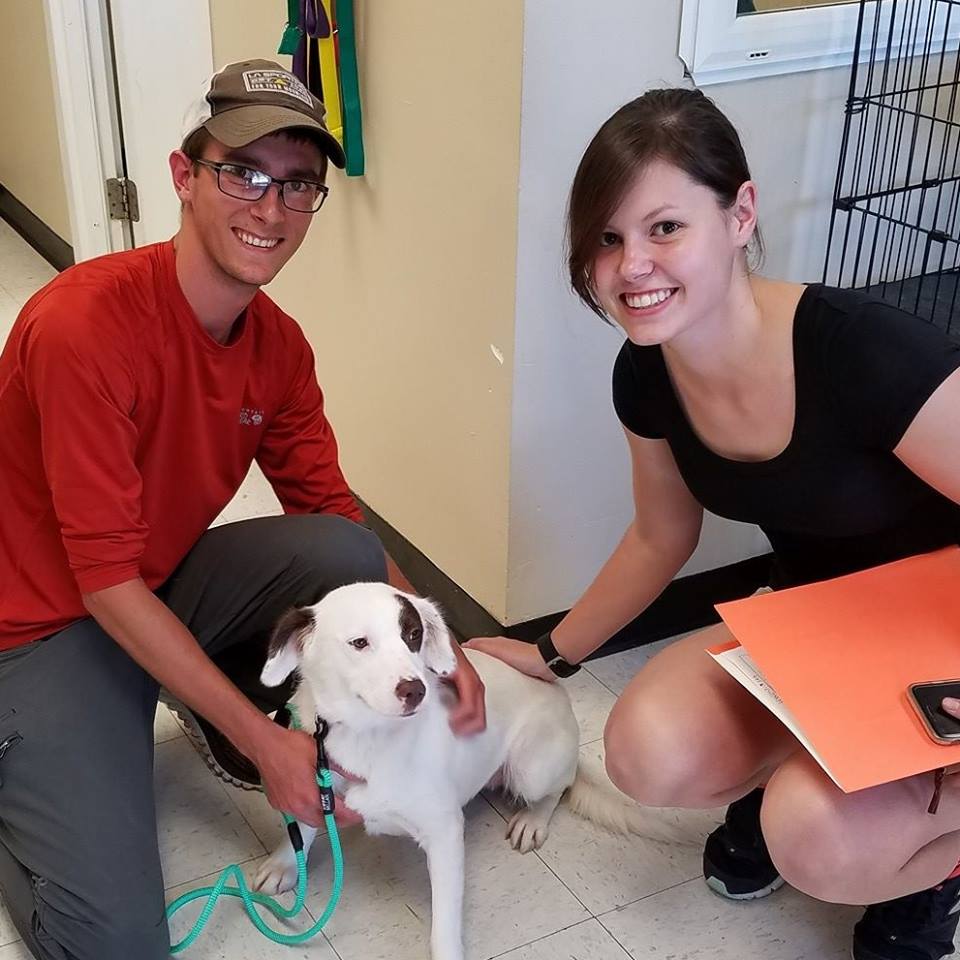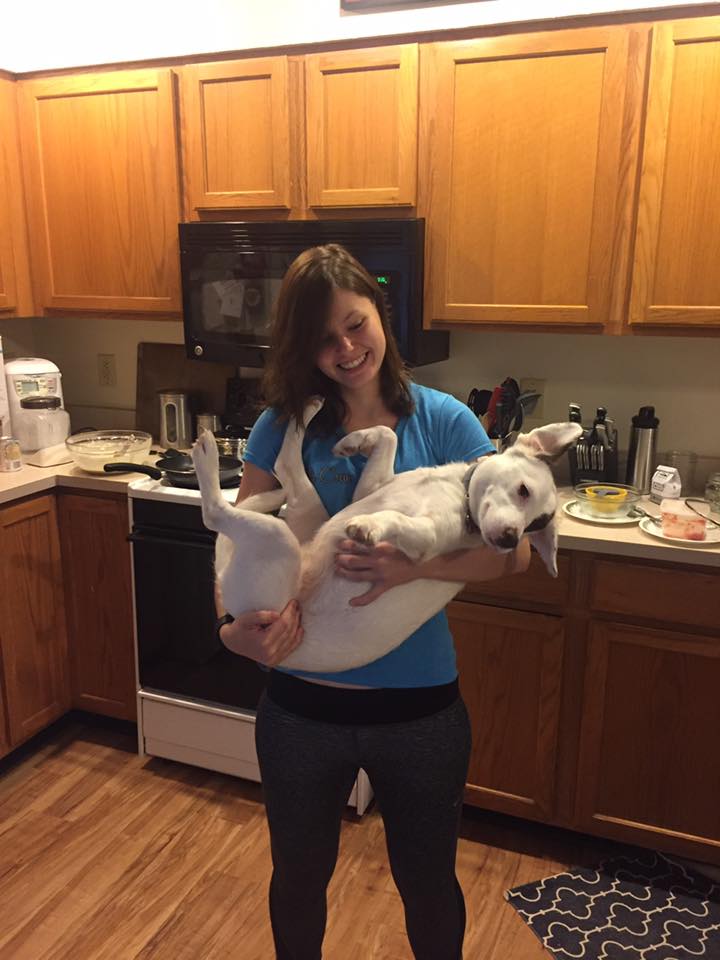Living in a shelter is far from “real” life for an animal and often prevents them from showing their true personality. Volunteer Olivia Humphreys shares her experience of adopting her dog, Flora, and the lesson she learned about not judging a dog by its shelter manners.
I adopted my sweet Flora almost a year ago. When I first met her, she was so scared she wouldn’t even let me or my fiancée touch her. She cowered under the chairs we were sitting on in the meeting room. The staff assured us she was just shy and would come out of her shell quickly. They encouraged us to take her outside, where she would have more space to run around.
“Does she like toys?” I asked.
“Yes, she loves them!” they said.

We took her to the fenced in area outside and the first thing she did was run under the bench and hide. We tried to nudge her out with treats and toys, neither of which she showed an interest in.
“So much for loving toys,” I told my fiancée.
Finally, we just decided to sit with her for a bit and let her move at her own pace. She still didn’t come out. We were at the shelter for a good 30-45 minutes when we finally made our decision; we were taking her home.
How did we know she wouldn’t be shy forever? We watched how she interacted with the staff.
When she was around them, she was a completely different dog. Her tail was wagging, she was licking their faces, and she laid on the ground looking for belly rubs.
This proved to me that the shy dog I was seeing could come out of her shell and be just as lovable as any other dog. And I was right! Two days after we took her home, she started snuggling with my fiancée. Now she gets super excited when we come home, sleeps right above my head, and is even cuddled up next to me while I’m writing this.
It’s easy to assume that all dogs will be outgoing and well behaved when we first meet them. In most settings, this is true.
But shelters are a completely different ballpark.
When you come across a dog in your day to day life, most of them are given lots of affection at home, have a comfy place to sleep or a “safe space” that is theirs they go to when scared, and don’t have more than maybe a few other animals in the home. They are also given ample time to exert their energy throughout the day. This makes for a stable environment that allows the dog to flourish and remain calm.
Animal shelters do the best they can, but they are extremely stressful places for dogs and cats. They’re often confined to a small kennel, with a limited amount of exercise time, surrounded by dozens of cats and dogs they’re unfamiliar with.
Different dogs express their stress in different ways around humans. For Flora, she cowered. We never got to see her in her shelter kennel, but I imagine if we had approached her in it, she would have been trying to bury herself in the back wall.

On the opposite end of the spectrum are the dogs who like to rush the door and bark. It’s not that they’re aggressive per say, they just have a lot of pent up energy and are looking to meet you and have you take them outside.
So, why not just take them outside? For some dogs, this is a great option! They are able to run off some energy or may be more comfortable in a larger, more open space. For other dogs, like Flora, it may not make much of a difference.
Just like people, every dog has their own personality and temperament.
The best way to determine if a dog will be a good fit for your family is to ask the staff. They spend the most time with the dogs and know their personality, energy levels, what they like and don’t like.
They will never try to talk you into a dog that won’t be a good fit for your family.
Why? Because they don’t want to see the dog come back to the shelter! While their goal is home as many dogs as they can, their priority is to ensure that the dog will stay with the family they go home with.
So just like we shouldn’t judge a book by its cover, don’t judge a dog by its kennel manner.
